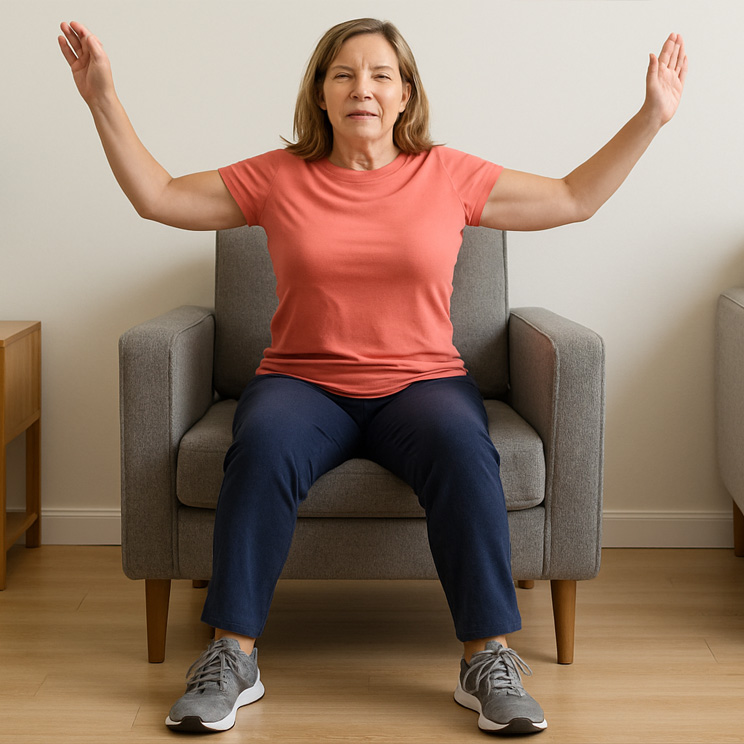Lymphedema, a chronic condition caused by the buildup of lymph fluid, can lead to swelling, discomfort, and reduced mobility. While there is no cure, lifestyle changes and therapeutic strategies can significantly improve quality of life. One of the most effective tools in managing lymphedema is exercise.
When performed safely, lymphedema exercises encourage lymphatic flow, reduce swelling, improve strength, and restore mobility. This comprehensive guide will walk you through the importance of exercise in lymphedema management, safe practices, targeted movements, and professional guidance to help you live more comfortably.
What Are Lymphedema Exercises?
Lymphedema exercises are gentle, low-impact movements specifically designed to:
- Stimulate lymphatic system and drainage
- Improve blood circulation
- Maintain muscle mass
- Enhance range of motion
- Support relaxation and breathing

Unlike strenuous workouts, these exercises focus on slow, controlled, and repetitive motions that aid lymph fluid movement without overloading the body.
Why Are Lymphedema Exercises Important?
Incorporating lymphedema-specific exercises offers several health benefits:
- Improve Lymphatic Drainage: Encourages fluid movement to reduce swelling.
- Boost Circulation: Promotes blood flow and supports cardiovascular and lymphatic health.
- Maintain Muscle Tone: Stronger muscles help support affected limbs and improve lymphatic flow.
- Enhance Flexibility: Gentle stretches prevent stiffness and improve daily function.
- Encourage Proper Breathing: Deep breathing supports drainage of both superficial and deep lymphatic pathways.
Safety Tips for Lymphedema Exercises
Before starting any routine, it’s important to exercise safely:
- Consult a Healthcare Professional – Always talk to your physician or Certified Lymphedema Therapist (CLT) before beginning.
- Start Slowly – Begin with gentle movements and gradually increase intensity.
- Listen to Your Body – Stop if you feel pain, soreness, or swelling.
- Incorporate Breathing Exercises – Deep, diaphragmatic breathing improves results.
- Stay Hydrated – Proper hydration supports lymphatic drainage.
Lymphedema Exercises by Body Area
1. Upper Body Exercises

Shoulder Rolls
Gently roll your shoulders forward and backward.
Arm Circles
Extend arms and move them in small, controlled circles.


Wrist Stretches
Flex and extend wrists to improve mobility.
2. Lower Body Exercises
Ankle Pumps
Point and flex ankles while seated or lying down.


Knee Extensions
Straighten and bend knees to improve flexibility.
Toe Taps
Tap toes on the ground while seated to activate muscles.

3. Full Body / Combined Movements

Marching in Place
Lift knees and swing arms in rhythm.
Seated Jumping Jacks
Move arms and legs outward and inward while seated.

Special Considerations
- Avoid Heavy Lifting – Strenuous activity without guidance can worsen symptoms.
- Wear Compression Garments – Use compression sleeves, stockings, or wraps during exercise (with professional guidance).
- Monitor for Overexertion – Stop if you notice increased swelling, pain, or fatigue.
Working with a Certified Lymphedema Therapist (CLT)
A CLT can create a customized exercise plan tailored to your needs. They may also recommend compression therapy, manual lymphatic drainage, and self-care techniques to maximize results. Use resources like the Norton School Therapist Directory to find a specialist near you.

FAQs About Lymphedema Exercises
Conclusion
Lymphedema exercises are a cornerstone of effective self-care. With consistent practice, professional guidance, and the right precautions, exercise can reduce swelling, improve flexibility, and enhance quality of life.
Remember: every person’s journey with lymphedema is unique. Stay in tune with your body, seek help from a CLT, and embrace movement as a powerful part of your care plan.

